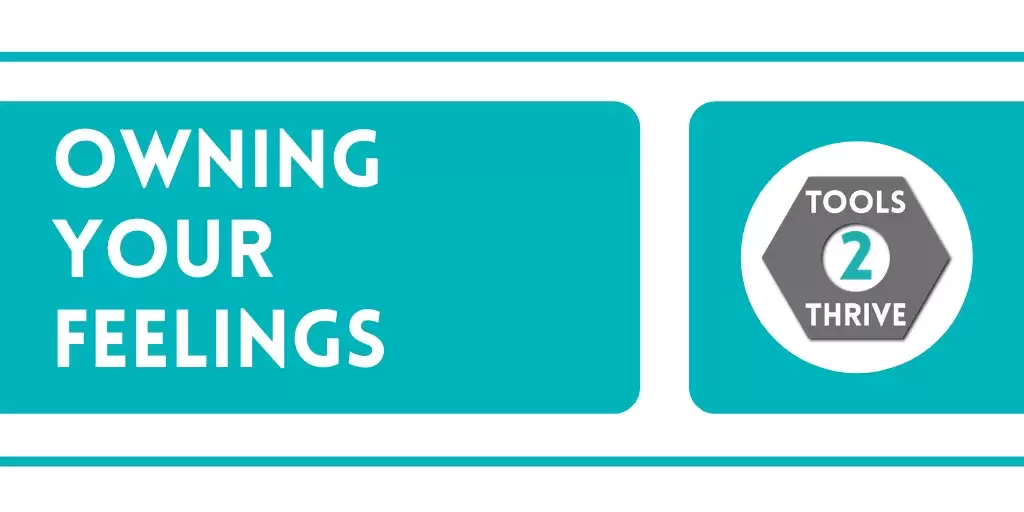
It can be easy to get caught up in your emotions as you’re feeling them. Most people don’t think about what emotions they are dealing with, but taking the time to really identify what you’re feeling can help you to better cope with challenging situations
Fast Facts
- The English language has over 3,000 words for emotions. [1]
- People who are good at being specific about identifying and labeling their emotions are less likely to binge drink, be physically aggressive, or self-injure when distressed. [2]
- When school-aged kids are taught about emotions for 20-30 minutes per week, their social behavior and school performance improves.[3]
Tips for Success
 Allow yourself to feel. Sometimes there are societal pressures that encourage people to shut down their emotions, often expressed through statements like, “Big girls don’t cry,” or “Man up.” These outdated ideas are harmful, not helpful. Everyone has emotions-they are part of the human experience-and you have every right to feel them, regardless of gender, sexual orientation, ethnicity, socio-economic status, race, political affiliation or religion.
Allow yourself to feel. Sometimes there are societal pressures that encourage people to shut down their emotions, often expressed through statements like, “Big girls don’t cry,” or “Man up.” These outdated ideas are harmful, not helpful. Everyone has emotions-they are part of the human experience-and you have every right to feel them, regardless of gender, sexual orientation, ethnicity, socio-economic status, race, political affiliation or religion.
 Don’t ignore how you’re feeling. Most of us have heard the term “bottling up your feelings” before. When we try to push feelings aside without addressing them, they build strength and make us more likely to “explode” at some point in the future. It may not always be appropriate to process your emotions at the very moment you are feeling them, but try to do so as soon as you can
Don’t ignore how you’re feeling. Most of us have heard the term “bottling up your feelings” before. When we try to push feelings aside without addressing them, they build strength and make us more likely to “explode” at some point in the future. It may not always be appropriate to process your emotions at the very moment you are feeling them, but try to do so as soon as you can
 Talk it out. Find someone you trust that you can talk to about how you’re feeling. You may find that people are eager to share about similar experiences they’ve had or times that they have felt the way that you are feeling. This can be helpful, but if you’re really only interested in having someone listen, it’s okay to tell them that.
Talk it out. Find someone you trust that you can talk to about how you’re feeling. You may find that people are eager to share about similar experiences they’ve had or times that they have felt the way that you are feeling. This can be helpful, but if you’re really only interested in having someone listen, it’s okay to tell them that.
 Build your emotional vocabulary. When asked about our feelings, most people will usually use words like bad, sad, mad, good, or fine. But at the root of “good, bad, sad, mad, or fine” are many words that better describe how we feel. Try building your emotional vocabulary by writing down as many “feeling” words as you can think of and think of a time that you felt that way.
Build your emotional vocabulary. When asked about our feelings, most people will usually use words like bad, sad, mad, good, or fine. But at the root of “good, bad, sad, mad, or fine” are many words that better describe how we feel. Try building your emotional vocabulary by writing down as many “feeling” words as you can think of and think of a time that you felt that way.
 Try journaling. Each night write down at least 3 feelings you had over the course of the day and what caused them. It doesn’t need to be a “Dear Diary” kind of thing. Just a few sentences or bullet points to help you practice being comfortable with identifying and expressing your emotions.
Try journaling. Each night write down at least 3 feelings you had over the course of the day and what caused them. It doesn’t need to be a “Dear Diary” kind of thing. Just a few sentences or bullet points to help you practice being comfortable with identifying and expressing your emotions.
 Consider the strength of your feelings. By thinking about how intense your emotions are, you may realize that what you thought you were feeling at first could better be described by another word. For instance, sometimes a person might say they are stressed when what they are really experiencing is something less severe like annoyance, alternatively anger might really be a stronger, deeper feeling like betrayal.
Consider the strength of your feelings. By thinking about how intense your emotions are, you may realize that what you thought you were feeling at first could better be described by another word. For instance, sometimes a person might say they are stressed when what they are really experiencing is something less severe like annoyance, alternatively anger might really be a stronger, deeper feeling like betrayal.
 See a mental health professional. If you are taking steps to be more in touch with your feelings, but are having trouble dealing with them, mental health providers like counselors and therapists have been trained to help. Some free or low cost options are also available. Your employer might have an Employee Assistance Program (EAP) that offers a limited number of free counseling sessions, and your Human Resources department can help you access this resource. If you don’t have an EAP through work, the leaders of religious organizations like churches, synagogues and mosques often have experience with counseling.
See a mental health professional. If you are taking steps to be more in touch with your feelings, but are having trouble dealing with them, mental health providers like counselors and therapists have been trained to help. Some free or low cost options are also available. Your employer might have an Employee Assistance Program (EAP) that offers a limited number of free counseling sessions, and your Human Resources department can help you access this resource. If you don’t have an EAP through work, the leaders of religious organizations like churches, synagogues and mosques often have experience with counseling.


